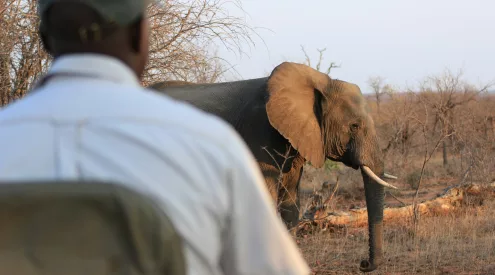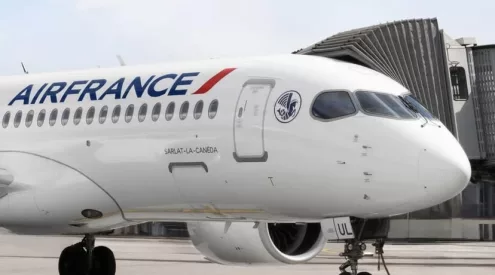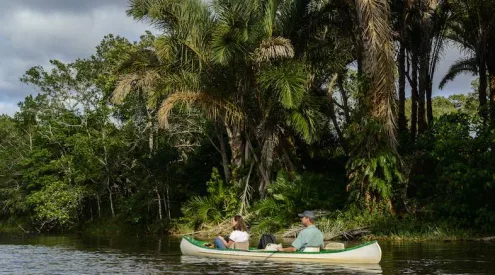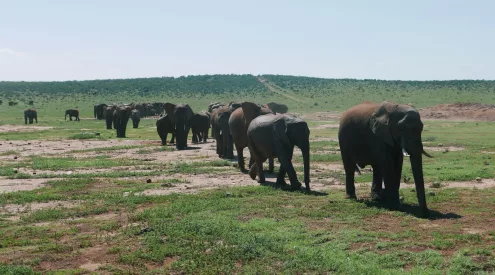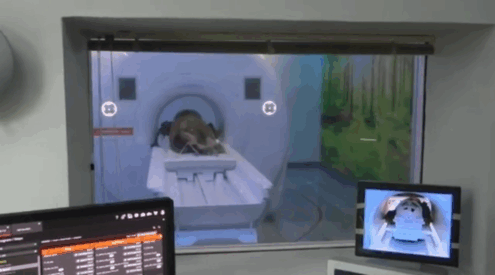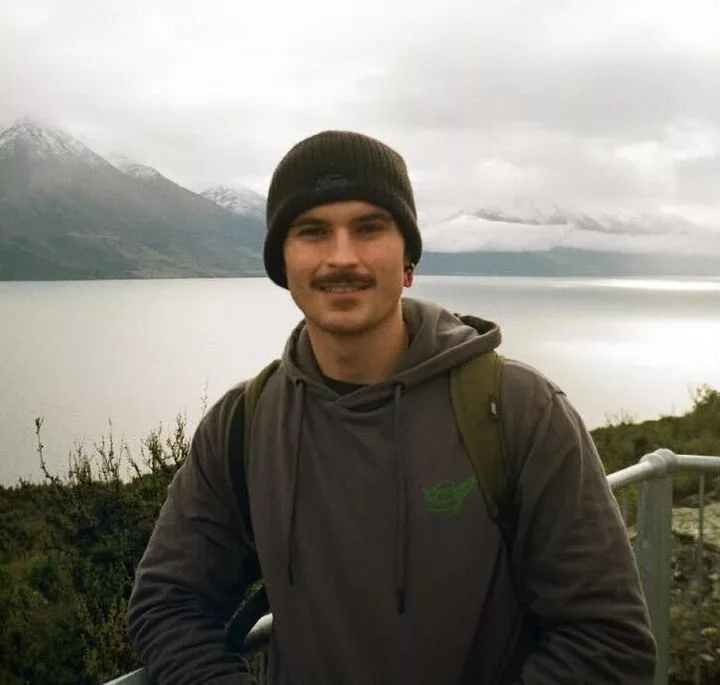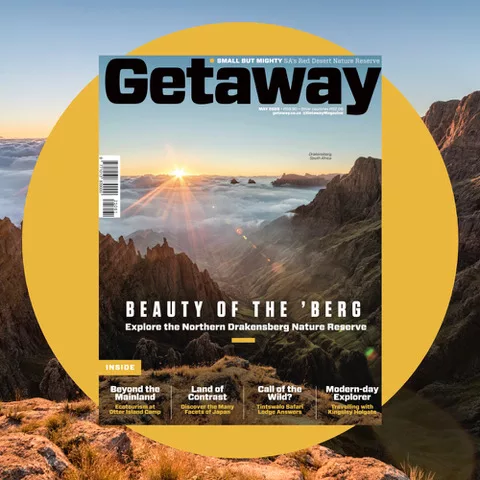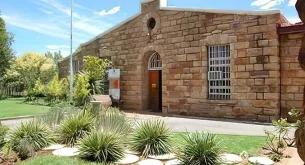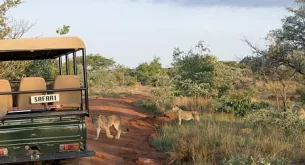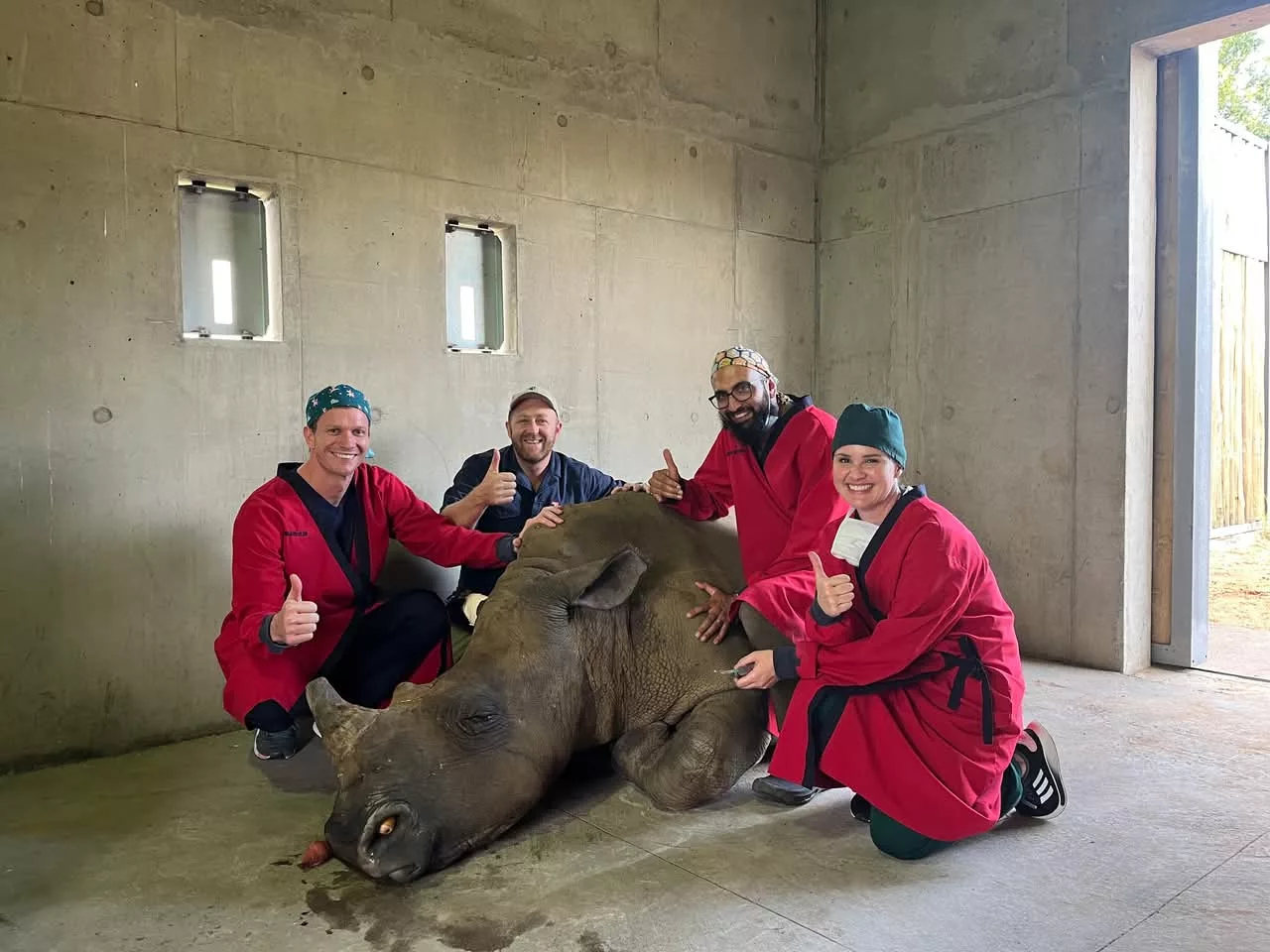
Image: Supplied
In a life-saving operation that has given a poaching survivor a fresh start, a team of veterinary specialists at the University of Pretoria (UP) has successfully restored a young white rhino’s ability to breathe.
ALSO READ: Local lion cub Zamba undergoes groundbreaking MRI procedure
The four-year-old bull, Houdini, was named for his miraculous escape from death after being shot in the nose during a poaching incident, UP reports.
He was taken in by The Rhino Orphanage in Limpopo, where he began a long road to recovery under the care of veterinarian Dr Pierre Bester.
While Houdini initially healed well, his caregivers later noticed he was struggling to breathe through one nostril—a serious problem for rhinos, who rely entirely on nasal breathing and their sense of smell.
“For Houdini, the obstruction didn’t just threaten his ability to breathe – it threatened his quality of life. So it was crucial that we attempt to correct the nasal passage,” said Dr Bester.
An endoscopy revealed a mass blocking Houdini’s right nasal passage. Concerned for the rhino’s quality of life, Dr Bester referred him to Professor Gerhard Steenkamp at UP’s Onderstepoort Veterinary Academic Hospital.
A CT scan confirmed the worst: Houdini’s nasal cavity was completely obstructed, and new bone growth threatened to block his other nostril too.
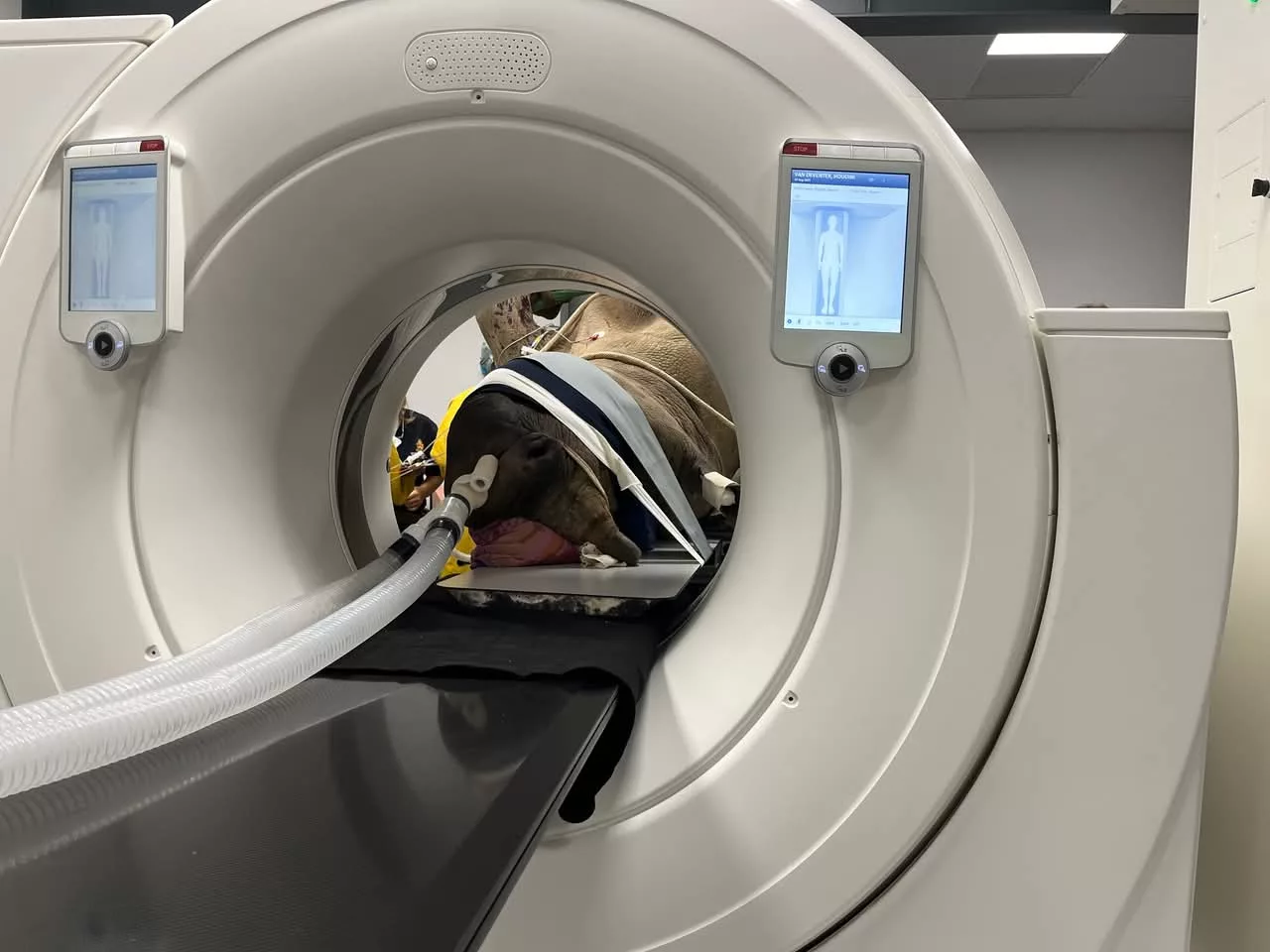
Image: Supplied
Given the extent of the obstruction, minimally invasive options were ruled out. Prof Steenkamp and equine surgeon Dr Elza Hollenbach decided on fully open surgery—an unprecedented challenge for a rhino.
The high-risk operation was further complicated by the dangers of prolonged anaesthesia in large wild animals.
“These animals – even healthy ones – often suffer from severe cardiopulmonary complications under sedation,” explained specialist wildlife veterinarian Dr Jacques O’Dell. “In Houdini’s case, with compromised breathing capacity, the anaesthesia posed a significant challenge.”
Although extensive research on rhino anaesthesia and immobilisation protocols has been conducted over the past few decades, these studies have primarily focused on relatively rapid field procedures that typically last less than an hour in healthy animals.
For Houdini’s unique case, data from horse anaesthesia had to be extrapolated.
“We know that anaesthesia that lasts for longer than two hours in horses increases the risk of mortality two-fold, with the risk doubling for every subsequent hour,” said Dr Abdur Kadwa, a specialist veterinary anaesthesiologist at the faculty who led the anaesthetics team during the procedure.
“These risks stem from the rhino’s own body weight compressing blood supply to vital organs and muscles; so we had to strike a delicate balance between ensuring the stability of his blood pressure and keeping a wild animal safely asleep and pain free.”
This was not the only challenge the team handled with extreme care. Ironically, the rhino had to undergo a ‘rhinotomy’ (cutting into the nasal cavity), a procedure that could cause significant bleeding.
As no fresh whole blood typed and matched to Houdini was available, the team had to employ a unique strategy called ‘haemodilution.’
Dr Kadwa explained that haemodilution involves collecting a significant proportion of the patient’s own blood which was then replaced by intravenous fluids. “So if Houdini bled, he would have lost a smaller proportion of actual blood and have had his own blood for transfusion, negating the risks of transfusion reactions,” Dr Kadwa said.
This approach is possibly a world first for a rhino, UP reports.
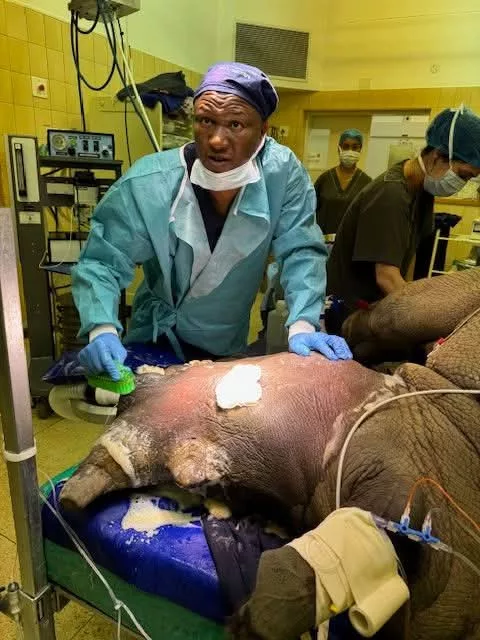
Image: Supplied
Thankfully, the delicate procedure was successful. The surgery lasted just under six hours. Surgeons accessed Houdini’s nasal cavity through a sinus below the horn area and successfully removed the mass. The team kept him stable throughout the operation, and within days, Houdini was up and breathing comfortably.
Within a week, Houdini was ready to return home, where he is reportedly doing very well.
“Seeing him walk out of the boma, breathing freely again was an emotional moment for all of us,” said Prof Steenkamp. “He’s a fighter, and he’s earned every breath.”
Thanks to the remarkable UP veterinary team, Houdini now has a second chance at the wild life he was meant to live.
TikTok | Instagram | Facebook | Twitter
ALSO READ: WATCH: Elephant teaches lions a lesson

